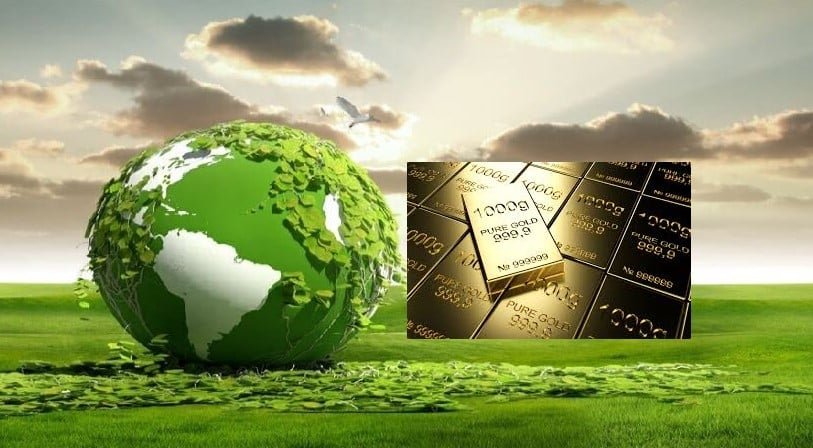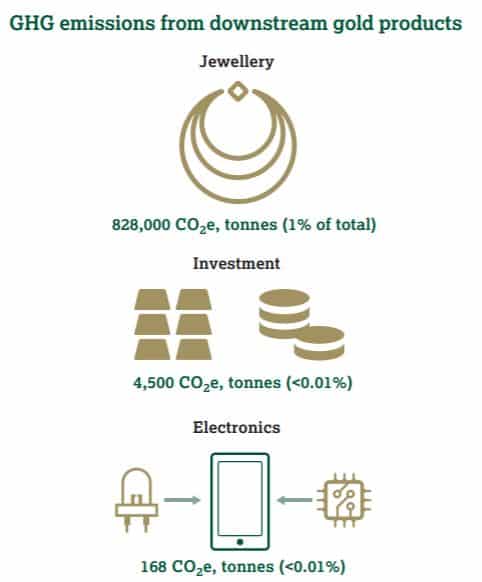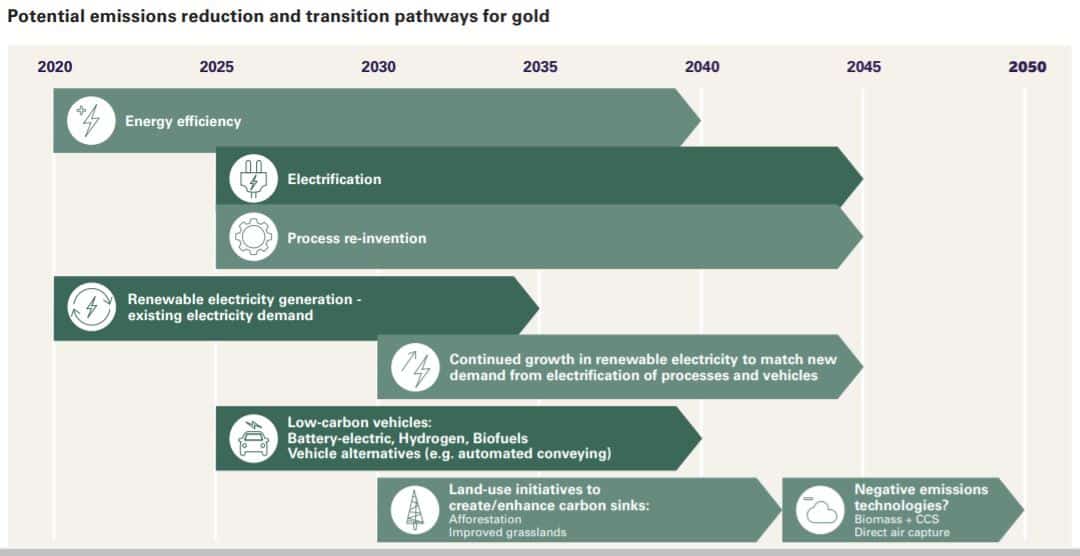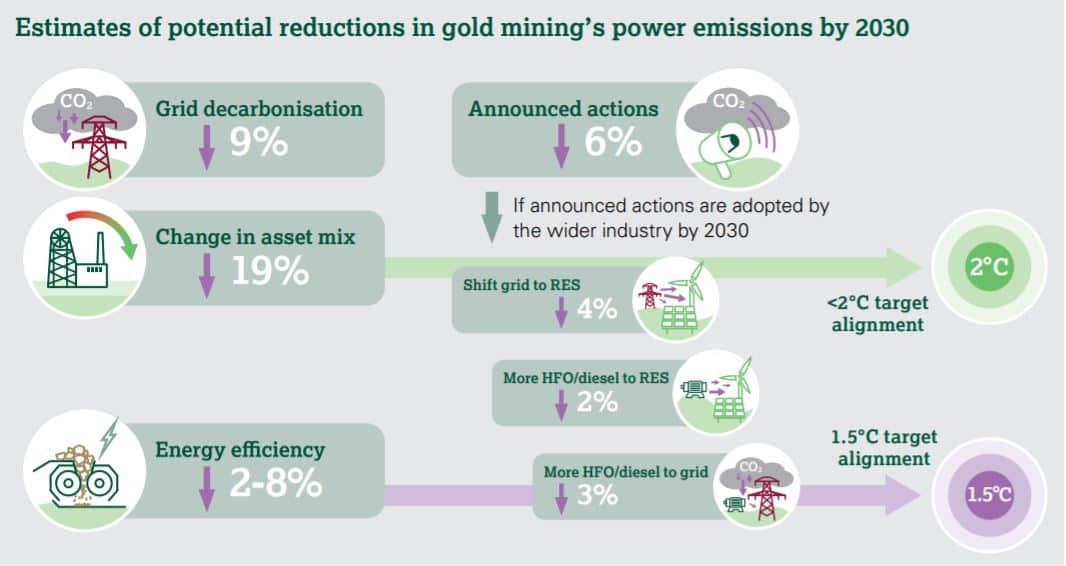The World Gold Council (WGC) analyzes the impact of climate transition on the gold industry and its stakeholders, focusing on power emissions.
The WGC and its members recognize the risks that climate change brings to the global economy and on the gold sector’s future.
Hence WGC, the global experts on gold, focuses to bring a clearer understanding of how climate-related risks can affect the entire industry.
The group does this by conducting research and promoting how responsible gold mining as a key aspect of its ESG supports the transition to a low carbon economy.
WGC’s Gold and Climate Change
Mining is a very energy-intensive industry that uses up to 11% of total global energy consumption. Estimated emissions for the global gold market are around 126.4 Mt CO2 equivalent a year.
The WGC identified that the major source of the gold’s greenhouse gas (GHG) emissions are from its mining operations. They represent the sector’s Scope 1 (direct) and Scope 2 (indirect) emissions.
For each ounce of gold produced that is roughly 800 kg CO2 (or 0.8 carbon credit equivalency).
-
About 95% of those emissions come from the power or fuel used in the sector (power emissions). Of this, electricity represents the largest source of emissions at the mine site.
But with electrification in gold mine sites, around 6 million liters of diesel each year were no longer used in mining operations.
The group also confirmed that carbon footprint from gold’s downstream (Scope 3) uses are relatively small. Here’s gold’s GHG emissions from its total downstream products.
Power emissions indeed play a big part in gold’s total carbon footprint. WGC seeks to provide an analysis of the potential impacts of changes in gold mining’s electricity generation.
More importantly, it aims to offer knowledge of how those changes may reflect the industry’s ability to meet climate targets.
Gold Net Zero Targets and Pathways
Based on its analysis, WGC outlined a range of possible steps and pathways for the industry to net zero. The image below shows these options.
The WGC estimated that the emissions pathway needed for the industry to help limit global warming to <2ºC calls for an emissions reduction of 80% by 2050. And if the industry wishes to achieve a 1.5ºC target, a 92% reduction by 2040 is necessary.
More so, gold mining companies need to achieve around 27% or 46% non-power emissions reduction by 2030.
Today, grids are transitioning to lower emission power sources. And WGC projected that this will translate to a 20% reduction in the emissions intensity of gold mines grid power by 2030.
That’s because new initiatives from gold miners are now focusing on cleaner electricity consumption. Solar energy is their top renewable energy source.
Solar is the preferred technology due to its relatively low cost, scalability and frequent geographic fit.
If single actions were taken to enable 1.5ºC target alignment, this requires either:
- replacement of 55% or more of direct fossil fuel generated power with renewables or
- replacement of 30% or more of grid supply with renewables.
So overall, the current net zero commitments by WGC gold miners show the vital role of energy in driving more emission reductions in the sector.
But there’s one more important finding that the WGC highlighted as the industry transitions to a low carbon future. That’s the impact of introducing gold as a strategic investment to a global multi-asset portfolio.
Aligning Investment Portfolios with Paris Agreement
One important finding of the group is that holding gold in a diversified portfolio can help reduce its carbon footprint.
For example:
- For a portfolio of 70% equities and 30% bonds, introducing a 10% allocation to gold (and reducing the other asset holdings by equal amounts) reduced the emissions intensity of portfolio value by 7%, and a 20% holding in gold lowered it by 17%.
And so, the WGC suggested that gold may play a positive role in mitigating portfolio climate impacts.




